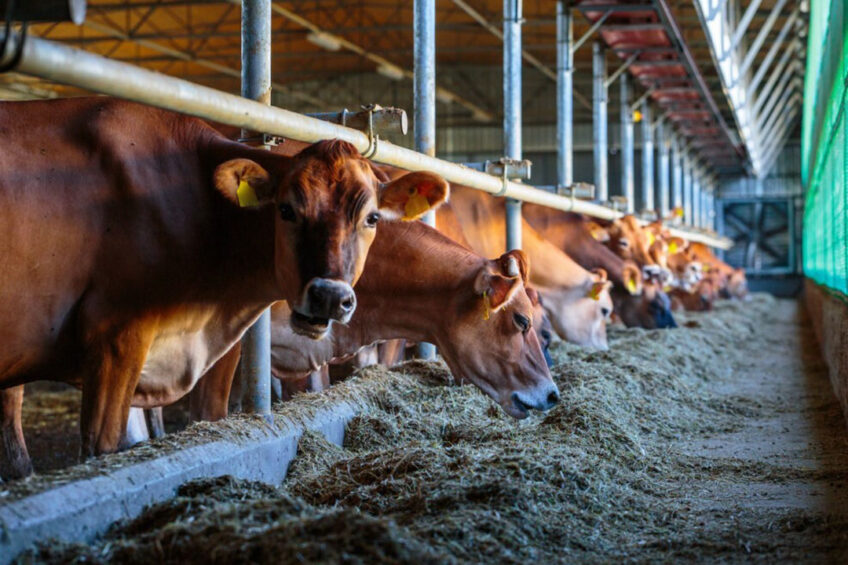Feed efficiency: A breeding goal for dairy cattle

The cost of feed constitutes a major component of variable costs associated with the dairy industry. Thus, selection for improved feed efficiency is essential to enhance profitability in dairy farms.
In addition to cost reduction, genetically improved feed efficiency minimises the environmental impact, reduces nutrient and greenhouse gas emissions per animal, and optimises land and resources. However, due to the lack of accurate individual feed intake data on a large number of commercial dairy cows, feed efficiency has been overlooked in national dairy cattle breeding goals. This article highlights the importance of feed efficiency as a breeding objective in dairy cattle.
What is feed efficiency?
Feed efficiency is a genetically complex trait that is defined as the relative ability of cows to turn feed nutrients into a product such as milk or milk components. Feed efficiency is thus units of output (the kg of milk produced) per unit of input (the kg of dry matter consumed) at the farm level or for an individual cow.
In growing and lactating cows, the traditional measures of feed efficiency are feed conversion ratio, feed conversion efficiency, and residual feed intake. Feed conversion ratio, which is lower in more feed efficient cows, is defined as dry matter intake divided by average daily gain. Feed conversion efficiency is described as kgs of produced milk divided by kgs of dry matter consumed. Residual feed intake is termed as the difference between the observed feed intake and the predicted feed intake of an individual.
Factors affecting feed efficiency
Forages are critical for maintaining a desired feed efficiency because they comprise a large proportion of a lactating cow’s diet and they are the most variable feed ingredient in terms of digestibility and nutrient composition. Increased forage digestibility leads to increased feed efficiency. In addition, adequate forage particle size in the ration maintains proper rumen environment and improves feed efficiency.
Days in milk is another factor affecting feed efficiency. Cows in early lactation lose body weight and use that energy for milk production which artificially increase feed efficiency. On the other hand, late-lactation cows gain weight and thus have a lower feed efficiency. Physical activity, body size, outside temperature or season of the year, and stress alter cows’ maintenance requirements which in turn affect how much of their energy intake they can devote to milk production. Feed additives such as yeast, ionophores, and direct fed microbials can increase feed efficiency in lactating dairy cows.
Selection for feed efficiency
Genetic selection refers to a process by which certain traits become more prevalent in an animal. However, the costs and feasibility of measuring individual feed intake in a large number of cows with pedigree information has limited the implementation of genetic selection for feed efficiency.
Alternatively, genomic selection is defined as the application of genome-wide genetic markers to predict breeding values of selection candidates. Feed efficiency traits are ideal candidates for genomic selection as long as dry matter intake is measured in combination with other traits such as milk production and live weight.
Concluding remarks
Feed efficiency is a heritable trait which is difficult to measure and challenging to include in the routine progeny test evaluations; however, genomic selection for feed efficiency can be successfully implemented in dairy cattle with a large enough training population.
In addition, the breeding goal needs to be refined and indicator traits that can be measured at low cost need to be identified. It is notable that the accuracy of genomic predictions for feed efficiency is low but enlarging training population, enhancing datasets used for genomic evaluations, and including additional functional information will enhance the accuracy.
Further research is therefore required to compare different approaches and define an optimal strategy to include feed efficiency into breeding programmes.
Join 13,000+ subscribers
Subscribe to our newsletter to stay updated about all the need-to-know content in the dairy sector, two times a week.










